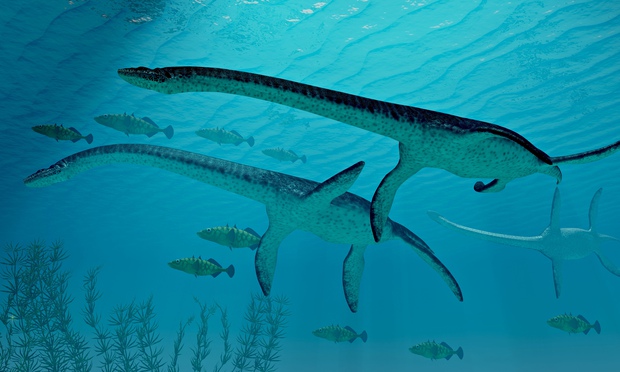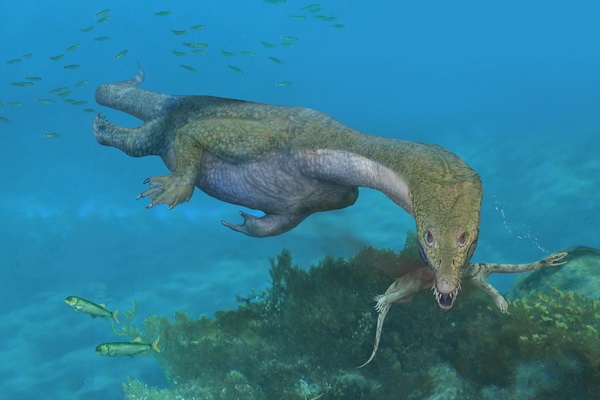- Tel: +86 813 2105845
- Fax: +86 813 2105845
- Mob: +86 13778532392
- Contact: Mr. Jacky
 info@dinosaurs-world.com
info@dinosaurs-world.com Jackydinosworld@gmail.com
Jackydinosworld@gmail.com Jackyyiming@gmail.com
Jackyyiming@gmail.com Jackyzengdinosaursworld
Jackyzengdinosaursworld
- Dinosaurs are one animal we should feel no qualms about gawking at

Who doesn’t want to see a museum with swimming robot plesiosaurs? Forget art galleries, I’m off to Dorset if and when it opens its planned Jurassica museum.
If built, this compelling attraction (that’s close to getting the go-ahead) will transform a Portland limestone quarry into a subterranean sanctuary for sea beasts that died out millions of years ago.
Animatronic replicas of ancient reptiles will swim in a shallow sea at the bottom of a landscaped and glass-roofed pit, where visitors will be able to study fossils and engage with interactive displays that bring the Jurassic era to life. Surely, this has to go ahead – come on, it even has David Attenborough as patron.
Plesiosaurs, ichthyosaurs and other ancient swimming reptiles were not, of course, “dinosaurs”, but rather the dragon-like denizens of the seas when dinosaurs ruled the land. They were the first animals of the Jurassic to be clearly visualised when Mary Anning discovered their stupendous fossils at Lyme Regis in the early 19th century. That makes Dorset the perfect place for a new Jurassic museum.

These giant extinct reptiles are the rock stars of the museum world. Ever since “dinosaurs” were named in the Victorian age, their fossils (and those of their flying and swimming contemporaries) have been the most magnetic museum treasures. Today, they are the only creatures truly and perfectly at home in natural history museums. The legions of stuffed animals that once filled them are no longer considered an appropriate expression of our relationship with nature.
Since the majority of their stuffed sharks and wombats vanished from view around 1980, nature museums have reinvented themselves as whizzy multimedia wonderlands. The Natural History Museum in London has done this especially well – but there’s still one kind of animal no one feels any qualms about gawping at as a spectacle and a cult object. Being extinct, and knowable only because science reconstructs them, dinosaurs are truly at home in museums – these are their safari parks, the only places the giants who dominated the earth 65 million years ago can truly be encountered.
The Natural History Museum’s beautiful new stegosaurus – the most complete skeleton of this unmistakable dinosaur, with its bizarre row of plates along its back and tail, that has ever been discovered – is a phenomenal thing to see. Who needs a Damien Hirst vitrine? Images of time, intimations of mortality, a sense of our tiny place in earth’s long history, all hover in the mind when you contemplate this brilliantly reassembled Jurassic creature.
Bring on the swimming plesiosaurs – there is no greater sight than an ancient creature resurrected by art and science.


 2015-01-27
2015-01-27
 New dinosaur species help scientists fill in evolutionary gaps
New dinosaur species help scientists fill in evolutionary gaps Feathered everything: just how many dinosaurs had feathers?
Feathered everything: just how many dinosaurs had feathers? Dinosaur Fossil With Fleshy Rooster's Comb Is First of Its Kind
Dinosaur Fossil With Fleshy Rooster's Comb Is First of Its Kind Scientists finally decode how dinosaurs turned into birds and learned how to fly
Scientists finally decode how dinosaurs turned into birds and learned how to fly Dark matter may have killed the dinosaurs, claims scientist
Dark matter may have killed the dinosaurs, claims scientist New duck-billed dinosaur uncovered in Alaska, researchers say
New duck-billed dinosaur uncovered in Alaska, researchers say
- Contact Us
- Tel: +86 813 2105845
- Fax: +86 813 2105845
- Contact: Mr. Jacky
 info@dinosaurs-world.com
info@dinosaurs-world.com Jackydinosworld@gmail.com
Jackydinosworld@gmail.com Jackyyiming@gmail.com
Jackyyiming@gmail.com Jackyzengdinosaursworld
Jackyzengdinosaursworld
- Copyright @ 2009 - 2020 Zigong Dinosaurs World Science & Technology Co.,Ltd.

